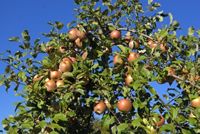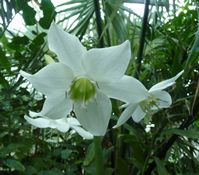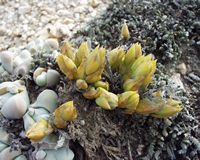As Europe and America limp slowly out of recession, many eastern countries continue to surge ahead. Several reports have questioned their ability to feed themselves. However, in an article below abridged from an original in the FPJ Journal, Rebecca Lewis of Promar International sounds a warning and describes the impact their horticultural industries could have on the UK fresh produce industry.
Editor
When East Meets West: growing the Asian link
In the next ten years, Asia's population will increase by more than 10 percent - an extra 430 million people - which represents well over half of the world's additional population in the period.
The ascent from poverty of large proportions of the population of India and China is well documented, as is the challenge of how these increasingly affluent countries will be fed. Agricultural production in China and India receives substantial investment and in many cases, is rising at an incredible rate. It is by no means focused only on the domestic market. Combined with their phenomenal geographic size, production volumes dwarf most other leading agricultural producing countries. Horticulture is no exception.

In India, the mango and grape industries, among others, are specifically targeted by the government for export development. Other products such as soft fruit and cut flowers follow behind.
Elsewhere in Asia, Thailand has already established itself as a major player in processed horticultural produce, such as canned pineapples and more niche products like individual quick-frozen products, as well as exotic items including baby corn, speciality Asian vegetables and asparagus.
Shifting social trends are changing the face of consumption, the Asian consumer and in time, the development of the supply chain. One of the key features is the rise of modern forms of retailing. In India, this only accounts for around 5% of the market at the moment, but in China it is already around 25% and growing fast. The so-called Pac Rim markets, such as Korea and Taiwan, are also seeing the rapid growth of more modern forms of retailing.

As both export and organised modern urban retail markets develop, there will also be an increased need for high-class traceability, accreditation and food safety systems, supply chain logistics, environmental technologies, corporate social responsibility strategies, new product development, innovation and processing technology.
This is where the UK is inherently strong. A foreign education is still highly valued and many UK agri-food oriented universities and colleges are already actively marketing and recruiting in Asia, particularly in China, to help provide the skills and knowledge these food industries of the future will require.
Asian agri food businesses will not just cause a ripple in Western markets in the next 10 years - it could be more like a tidal wave. The UK produce sector needs to ensure it can ride with the wave, not get caught in its wake and only wishing it had seen it coming. It's already on the way.
This requires vision and planning because once the wave arrives, it could already be too late. How we respond to all of this will be critical. A positive response could see new investment in production and distribution, as well as the opportunity for the UK to develop knowledge-based services back into Asian markets.
A negative or closed response might well see Asia look elsewhere in the EU or in the US, Latin America or Australasia and leave the UK out in the cold. A case of catching Asian flu - or not - as the case might be?
Rebecca Lewis
Promar International
The above article is an abridged version of Rebecca's full article which appeared in FPJ, 20 August 2010, pages 18-20 and we are grateful to both for permission to reproduce the version above.
Medicinal Plant of the Month
Eucharis amazonica , Galanthus peshmenii and Galanthus reginae-olgae, Amaryllidaceae

This bulbous perennial with evergreen leaves requires moist fertile soil in partial shade with a minimum temperature of 10°C to grow well. It flowers in autumn through winter and definitely brightens up the glasshouses on a gloomy day. The Amaryllis family to which this genus belongs is well known for the alkaloids (nitrogen containing naturally occurring compounds biosynthesised from amino acids) it contains. The most medicinally important alkaloid found in Amaryllidaceae plant is galanthamine. This molecule was first isolated in 1952 after being extracted from Galanthus woronowii, a snowdrop species native to Turkey, Russia and Georgia.
Since then many different Amaryllidaceae genera have been found to contain this substance. In Bulgaria, Leucojum aestivum is grown for the commercial extraction of galanthamine, in China the red spider lily, Lycoris radiata is grown for this purpose whilst in the UK there are many acres devoted to cultivation of Narcissus ‘Carlton' to provide the raw material.
Galanthamine has now been used internally for approximately 40 years for the reversal of neuromuscular blockade and for the treatment of neurological conditions such as post-polio paralysis and myasthenia gravis. It was not until the 1990s, however, that galanthamine was licensed as a treatment for Alzheimer's disease. Until last month, galanthamine was only recommended by The National Institute for Health and Clinical Excellence (NICE) for the treatment of moderate to severe Alzheimer's disease thus limiting the number of patients who could like benefit from this drug. However, in early October 2010, NICE updated its recommendations to include patients with mild Alzheimer's disease. Production will need to be increased and although some of the need is met by total chemical synthesis, much of the drug is still extracted directly from plants. One company, Alzeim, are planting a further 60 acres (24ha) in the Black Mountains near Talgarth, and will open a production line at new offices in Brecon before the end of October.

Alison Foster
University of Oxford Botanic Garden
Horticulture Industry News
For the very latest horticultural news follow us on Facebook and or
Twitter.
Lord Sainsbury calls for new GM debate
Lord Sainsbury says it is time for a new debate on GM foods as he thinks they will help feed the world population estimated to reach 9bn by 2050. The former science minister claimed it would be foolish for the UK to rule out the technology. More
-
Plan for water shortages
Following a report from the RASE, using rainfall figures from Rothamsted Research, ADAS is encouraging growers to carry out a water audit and prepare for water shortages. More -
Better global water management
Rivers that serve 80% of the world's population are threatened by agricultural runoff, pollution and invasive species, according to a new international study. US researchers studied the effects of a variety of environmental stress factors on water systems. They found that in addition to threatening human lives, pollutants also endanger the biodiversity of 65% of the world's river habitats and put thousands of aquatic wildlife species at risk. -
Drought threatens much of globe
We are facing the possibility of widespread drought in the coming decades, but this has yet to be fully recognized by both the public and the climate change research community. Heavily populated countries face a growing threat of severe and prolonged drought in coming decades. More
Oak processionary moth sighted outside London

- Further fears - efforts to control pest in London appear to be failing.
Plane trees now threatened
Tree experts at the London's Royal Parks have discovered a new disease called Massaria in around 200 plane trees, necessitating the removal of infected branches before they shear off and fall to the ground. The disease had been previously known in Germany and the Netherlands but was unknown in the United Kingdom until last year. Forestry Commission have warned that its ability to kill individual branches has created a 'risk to public safety'. More
- More information about pests and diseases of trees - what to look out for.
Scientists find genes that help put plants to bed
It is not only people that benefit from a good night's rest - scientists have pinpointed genes that help plants sense when it is dark and time to slow down. A study led by the University of Edinburgh used computer models of gene networks in a simple cress plant to show that certain genes take effect to enable plants to reduce their activity at night and predict when the sun will rise again. The genes allow plants to make tiny adjustments to their internal clock as light changes - a process that is crucial in helping plants to adapt to different lengths of days and changing seasons.
New products
A number of new products were on display at this year's UK stand at HortiFair in Amsterdam, organised by the Commercial Horticultural Association including;
-
Saponins aid root absorption
Hortifeeds Ltd have introduced HortiWet Organic, a natural plant extract and bio stimulant containing surface tension breaking saponins. By affecting water movement and uptake in the root zone it improves nutrient absorption and increases biological activity in the soil, stimulating plant growth. It can be used via incorporation, flood or drip irrigation and as a foliar spray and is particularly useful in helping plants to recover from stress conditions, The product is now approved for use by organic growers under North American and European legislation. -
Sticky rolls to control tomato leaf miner Tuta absoluta
Russell IPM has developed Tuta+ sticky rolls to combat tomato leaf miner Tuta absoluta. These pheromone impregnated yellow sticky rolls are designed for use in green houses where beneficial insects are not in use as a biological control agent. The yellow colour of the sticky rolls has the extra advantage of capturing whitefly and aphids providing a one stop solution to combat Tuta absoluta and other soft bodied invasive species present in the green houses. (Photo right by Russell IPM) -
Red sprouts for Christmas
Whether you love them or hate them, sprouts are a traditional part of the Christmas menu. Since red is a predominant colour of the season you can now have red sprouts (well purple really) to blend in.
National infrastructure plan - looks good for science?...
The Prime Minister speaking at the CBI conference said the governments aim was to ensure that the UK remains a world leader in science and research by continuing support for the highest value scientific research by maintaining a science budget of £4.6 billion.
... or is science better off without government?
Philip Salter, from the Adam Smith Institute, argues that private funding is vital for translating scientific research into economic growth. Despite the outcry from many in the scientific community over cuts in government spending, he argues this is good news for science as well as for taxpayers. The British Government only started to fund science after the Great War, well after the technological and economic surges of the agricultural and industrial revolutions had taken place. The fact is that these revolutions required no government funding. More
Small genomes grow quicker
Scientists at Kew's Jodrell Laboratory have discovered that Paris japonica, a striking rare native of Japan, has the largest genome of them all - bigger than the human genome and even larger than the previous record holder - the marbled lungfish. The more DNA there is in a genome, the longer it takes for a cell to copy all its DNA and divide. The knock-on effect is that it can take longer for an organism with a larger genome to complete its life cycle. It is no coincidence that many plants living in deserts which must grow quickly after rains have small genomes enabling them to grow rapidly. In contrast, species with large genomes grow much more slowly and are excluded from such habitats. More

For hundreds of years, indigenous South Africans have chewed the indigenous plant, Sceletium tortuosum (photo right by Henry Brisse), to reduce stress, relieve hunger, sedate and elevate moods. Now they have a license to study and market it, and plan to sell it over-the-counter worldwide. More
New route for GM escape
Scientists at the University of Bristol have discovered a previously unknown route by which GM genes may escape into the natural environment. The bacterium Agrobacterium tumefaciens transforms plant tissue as part of its infection process and this natural process provides an important toolbox for scientists to genetically manipulate many species of plants. In the natural environment Agrobacterium and fungi likely encounter each other at plant wound sites raising the possibility of natural gene transfer from bacterium to fungus. The results demonstrate that when placed together on damaged plant tissue, Agrobacterium readily transforms associated fungi with implications for the risk assessment of GM plants generated via Agrobacterium-mediated transformation. More
Quotes of the Month
'Science is wonderfully equipped to answer the question 'How?' but it gets terribly confused when you ask the question 'Why?' '
Erwin Chargaff - an Austrian biochemist who discovered two rules that helped lead to the discovery of the double helix structure of DNA
Events Calendar
Crop World
1 - 3 Nov 2010, United Business Media and British Crop Protection Council
ExCel, London UK
The Artemisinin Supply for Malaria Control
1 Nov 2010, Lecture by Professor Diane Bowles
Oxford Botanic Garden, Oxford, UK
Planning to Achieve/More from Less
2 Nov 2010, British Institute of Agricultural Consultants
Kenilworth, UK
Stepping up to the plate
2 Nov 2010, EFFP
London, UK
Predicting and Controlling the Shelf-Life of Foods
3 - 4 Nov 2010, Food Chain CIC
Leatherhead, Surrey, UK
Know Your Plants - Developing skills for better science, horticulture and communication
3 - 5 Nov 2010, Botanic Gardens Education Network
Royal Botanic Gardens, Edinburgh, UK
The Roots of a Cure
8 Nov 2010, Lecture by Professor Monique Simmonds
Oxford Botanic Garden, Oxford, UK
Biodiversity in the 21st century: Are we missing the target?
9 Nov 2010, Society of Biology
London, UK
Advances in Biological Control
17 Nov 2010, Association of Applied Biologists
Marston, Lincs, UK
Towards 2013. An agriculture fit for purpose
17 - 18 Nov 2010, British Institute of Agricultural Consultants
Wellesbourne, Warwick, UK
Bananas, Genetics and Appropriate Biotechnology
18 Nov 2010, Society of Biology
Nottingham, UK
Tropical Horticulture
22 - 26 Nov 2010, International Society for Horticultural Science
Kingston, Jamaica
Oatridge Conference and Exhibition
25 Nov 2010, Scotgrow
Ecclesmachan, Nr Edinburgh, UK
Innovative ideas in pest and weed control in field vegetables
25 Nov 2010, Association of Applied Biologists
Rothamsted Research, Harpenden, UK
What makes an alien invasive?
7 - 8 Nov 2010, Association of Applied Biologists
Edinburgh, UK
Ideotypes - is the understanding of physiology relevant to the future of plant breeding?
7 Dec 2010, Association of Applied Biologists
Reading, UK
Water and nitrogen use efficiency in plants and crops
15 -16 Dec 2010, Association of Applied Biologists
Grantham,UK
Stress Responses - molecules, organisms, environments
4 - 7 Jan 2011, British Ecological Society, Society for Experimental Biology, Biochemical Society
London, UK
Adapting Conservation to a Changing Climate
11 - 12 Jan 2011, British Ecological Society and Natural England
London, UK
IPM Essen
21 - 25 Jan 2011, Messe Essen
Essen, Germany
Interaction of Pesticide Application and Formulation on Residues in Fruit and Vegetables
9 Feb 2011, Association of Applied Biologists
Jealotts Hill, UK
Horticulture of Opium Poppy
7 - 11 Feb 2011, International Society for Horticultural Science
Lucknow, India
Crop Protection in Southern Britain
23 Feb 2011, Association of Applied Biologists
Impington, Cambridge, UK
Sustainable Vegetable Production in South East Asia
14 - 17 Mar 2011, International Society for Horticultural Science
Salatiga, Indonesia
Wild Relatives of Subtropical and Temperate Fruit and Nut Crops
19 - 23 Mar 2011, International Society for Horticultural Science
Davis, CA, USA
Forests and Global Change
28 - 30 Mar 2011, British Ecological Society
Cambridge, UK
If you would like to advertise a forthcoming event please contact communications@soci.org
Horticulture Group Contact Details
For submitting ideas or to volunteer to be part of a committee or a group, please contact:
Acting Chairman - Peter Grimbly
Meetings Secretary - Marion Stainton
Minutes Secretary - Margaret Waddy
Newsletter Co-ordinator - Sue Grimbly, E: scihortigroup@btinternet.com
SCI contact - communications@soci.org T: +44(0)20 7598 1500
